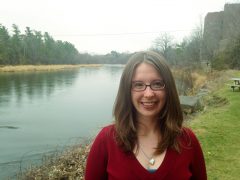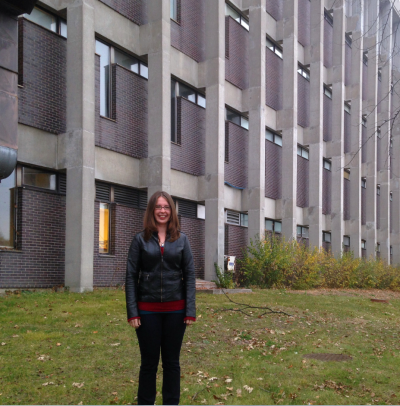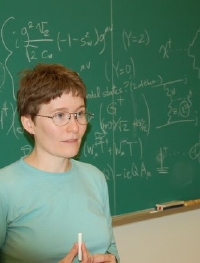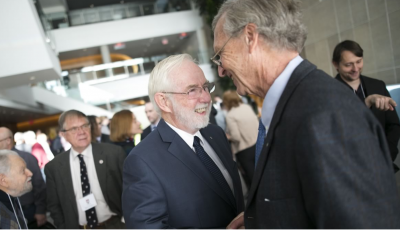 Both of Katy Hartling’s parents were scientists but that didn’t mean she was automatically interested in pursuing a similar career when she grew up.
Both of Katy Hartling’s parents were scientists but that didn’t mean she was automatically interested in pursuing a similar career when she grew up.
“I didn’t do science competitions or go to math camp and my hobbies were all very artsy — reading fiction, art classes and playing flute in the school band.”
However, all that changed abruptly when her grade 12 physics teacher showed a TV special on particle physics and string theory. She was hooked! “It was a very sudden inclination, but it stuck; I’m still fascinated 10 years later.”
While pursuing her undergrad degree in physics, Art McDonald, the esteemed former director of the Sudbury Neutrino Observatory (SNO), came to speak. Hartling talked with him about what programs to consider for graduate studies.
She explains why she chose Carleton: “Despite the fact that we have a relatively small physics department here at Carleton, I think we have a very accomplished particle physics research program. Our experimentalists are affiliated with a variety of important international collaborations. In addition, our theory group is one of the strongest in Canada with respect to phenomenology (i.e. analysis that bridges the connection between theory and experiments) and studies of physics beyond the Standard Model.”


Dr. Heather Logan
Hartling also wanted to work with Carleton Physics Professor Heather Logan. “Prof. Logan is a fantastic physicist and a great mentor. She truly cares about her students and has been incredibly supportive of me throughout all aspects of my graduate studies: guiding my research projects, advising my professional development, and encouraging my extra-curricular pursuits.”
Like Logan, Hartling is a theoretical particle physicist. That means she studies the fundamental particles from which all matter and radiation are built. As a theorist, she develops mathematical models (or theories) that try to describe and explain the particle interactions and behaviours that experimentalists observe in their detectors.
In particular, she studied models of the Higgs boson and dark matter. The Higgs particle is related to how matter becomes massive and heavy. Dark matter is still elusive. Because the evidence for these particles is very new and/or incomplete, there are a lot of different models to describe how they might behave and, as yet, no one knows which one is the most accurate.
It’s Hartling’s job to figure out whether or not a model can accurately explain the data and identify any key behaviours that could make the model easy to identify (or rule out) in future experiments.
Says Hartling: “The more we discover about these particles, the closer we come to understanding exactly how these types of matter work. However, someday, once we know much more about how these particles behave, we should be able to develop new technologies.”
Physicists had been theorizing about the Higgs boson particle for almost 50 years when it was finally discovered in 2012. “I was lucky enough to be working on it right when it was first experimentally observed,” says Hartling, “so that was extremely exciting for me, and a huge accomplishment for the physicists here at Carleton who work on the ATLAS detector, one of the two detectors that discovered the Higgs.”
Another thrill for Hartling was again seeing Art McDonald, who came to Carleton a few months ago to discuss his recent Nobel Prize in Physics for his work with SNOLAB and to thank the Carleton team for their collaboration.

Art McDonald with Carleton Professor David Sinclair
Now she has graduated with her PhD, Hartling will be going to work for Canadian Nuclear Laboratories (CNL) in their applied physics division.
As for young people, who are just starting to think about their future careers, Hartling has these thoughts on pursuing a career as a physicist. “Physicists come in all shapes and sizes. Some of us are nerdy, some of us are sporty, and some of us play in rock bands. We come from all over the world. Some of us work mostly alone, and others work in collaborations of over 2000 people. We use our understanding of forces, energy, matter, and radiation to solve all sorts of problems: from exploring the universe, to improving electronic technologies, to treating cancer. The only thing we all have in common is a desire to understand the world around us. And if you want to learn how the world works, you can be a physicist too.”
Wednesday, November 11, 2015 in Grad Student Research, News
Share: Twitter, Facebook





